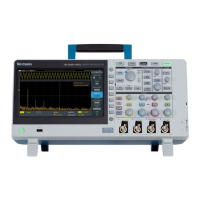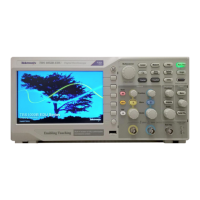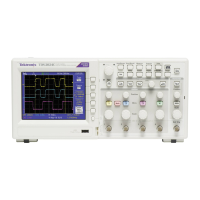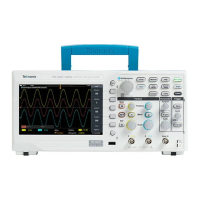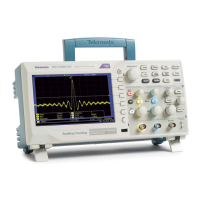is a valid message that sets the acquisition mode to average, queries the
number of acquisitions for averaging, and then queries the acquisition state.
The instrument executes concatenated commands and queries in the order it
receives them.
■
Any query that returns arbitrary data, such as ID, must be the last query when
part of a concatenated command. If the query is not last, the instrument
generates event message 440.
Here are some INVALID concatenation examples:
■
CH1:COUPling DC;ACQuire:NUMAVg 16 (missing colon before ACQuire)
■
CH1:COUPling DC;:BANDwidth ON (invalid colon before BANDwidth)
■
CH1:COUPling DC;:*TRG (invalid colon before a star (*) command)
■
HORizontal:MAIn:POSition 0;MAIn:SCAle 1E-13 (levels of mnemonics are
different; either remove the second occurrence of MAIn:, or put HORizontal:
in front of MAIN:SCAle)
Message Terminators
This manual uses the term <EOM> (End of message) to represent a message
terminator.
GPIB End of Message (EOM) Terminators. GPIB EOM terminators can be the
END message (EOI asserted concurrently with the last data byte), the ASCII
code for line feed (LF) sent as the last data byte, or both. The instrument always
terminates messages with LF and EOI. White space is allowed before the
terminator; for example, CR LF is acceptable.
USB End of Message (EOM) Terminators. The EOM bit must be set in the USB
header of the last transfer of a command message
See the USB Test and Measurement Class Specification (USBTMC) section
3.2.1 for details. The instrument terminates messages by setting the EOM bit in
the USB header of the last transfer of a message to the host (USBTMC
Specification section 3.3.1), and by terminating messages with a LF. White
space is allowed before the terminator; for example, CR LF is acceptable.
Command Syntax
8 TBS2000 Series Programmer
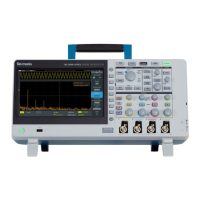
